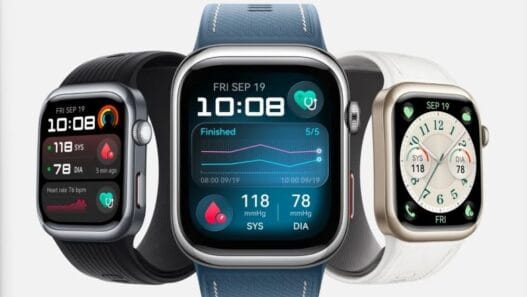The TPM 2.0 requirement for Windows 11, among others, is causing a lot of debate and all kinds of anger about the thousands of PCs that become obsolete just because they do not have this small motherboard chip.
Table of Contents
Microsoft took a significant step forward with the release of Windows 11 in October 2021, marking the next evolution of its operating systems. With a new interface as well as functionalities that have arrived and others that have gone, Windows 11 came to light with the promise of being somewhat superior in terms of experience and security with respect to a Windows 10 that has indisputably become the king.
Although it’s been a long time, people are certainly having a hard time getting away from Windows 10. Based on Statcounter data from April 2024, Windows 11’s market share fell to 26.19%, down from its peak of 28.16% in February 2024.
Meanwhile, Windows 10 has risen to more than 70%, even after Microsoft announced the end of support for Windows 10 in October 2025. In short, many have been left behind, and although they would have given Windows 11 a chance, they simply can’t because their PC does not meet the requirements that are requested.
Among all of them, there is one in particular that is giving a lot to talk about, and some have even tried to skip it to have Windows 11 on a computer: the Trusted Platform Module (TPM) 2.0 requirement.
What is TPM 2.0?
The Trusted Platform Module (TPM) 2.0 is a hardware component designed to provide hardware-based security features. Imagine a small chip on your motherboard that acts as a digital safe, storing encryption keys, passwords, and digital certificates. This chip is designed to withstand physical tampering attempts and software attacks.
The functionality of TPM 2.0 revolves around generating and handling cryptographic keys. For example, when you configure BitLocker to encrypt your hard drive, the TPM stores the encryption key. Every time you start your computer, the TPM checks the integrity of the system before releasing the key, ensuring that there have been no unauthorized changes to the hardware or software.
One of the key benefits of TPM 2.0 is its ability to improve authentication. In the case of Windows Hello, the TPM can securely store the biometric data used for facial or fingerprint recognition. This means that even if an attacker manages to gain access to your computer, they won’t be able to easily extract this very private information.
In addition, it also plays a key role in preventing boot attacks and protecting against malware. By checking the system situation during boot, you can detect and prevent attempts to modify the operating system startup process, a very famous and widely used technique.
The Upgrade Dilemma: From Windows 10 to Windows 11
The transition from Windows 10 to Windows 11 has given rise, as mentioned at the beginning, to major problems for many users due to the TPM 2.0 requirement. This barrier has mostly affected two groups of users: those with older hardware and those who have built their own PCs.
For the former, the situation is frustrating. Many PCs manufactured before 2016 don’t have TPM 2.0, even though they’re perfectly capable of running Windows 10 without problems.
Those who have created their own PC have also been affected. Many motherboards, especially mid-range and low-end motherboards, didn’t include TPM 2.0 as standard until relatively recently. This means that even some very powerful computers created just a few years ago don’t meet the requirements of Windows 11.
Microsoft has justified this decision by arguing that TPM 2.0 is a new part, yes, but key to a base level of security on all devices running Windows 11. However, this stance has been criticized for being too restrictive and potentially forcing users to buy new hardware or a new computer unnecessarily.
The game of cat and mouse, but goodbye to the tricks to bypass TPM 2.0 and install Windows 11.
Faced with the frustration generated by this requirement, the tech community was quick to look for alternative solutions to install Windows 11 on unofficially supported hardware. These “workarounds” ranged from modifications to the Windows registry to the creation of modified installation images that bypassed TPM verification.
However, Microsoft did not sit idly by in the face of these practices. In a beta update, the company has blocked a workaround that allowed Windows 11 to be installed on computers that did not meet the TPM 2.0 chip requirement, something that, in particular, brings hundreds of users to their heads.
Taking into account all the above, it is logical that ways are being looked for to bypass it, and during the last year, ways to do so have emerged, but Microsoft has exploded and wants to stop anyone who does not comply with the established.
Precisely this latest update of Windows 11 eliminates one of the simplest solutions, although in reality it seems that there are quite a few to throw away.
Is Microsoft really the villain in this movie? Not really. This requirement was established from the beginning, and although yes, it is true that there have been ways to circumvent it, in the end it is going against what was established by the brand, either for security or for you to make the switch to Windows 11.
In the end, this and the rest of Microsoft’s requirements aim to ensure the security and stability of Windows 11. By requiring computers to comply with the minimum set, the risk of compatibility issues is reduced and the overall user experience is improved, at least a priori.
If your computer does not meet the requirements of TPM 2.0, you will have to look for other alternatives, such as upgrading your computer, finding a workaround, or considering switching to another operating system.
A new problem on the table: planned hardware obsolescence
Beyond whether or not your computer can upgrade to Windows 11 and whether it is fair or not, a new reality has come to light in the technology sector: the planned obsolescence of hardware.
While Microsoft argues that these measures are necessary to ensure a minimum standard of security, many users and experts question whether this approach is really necessary or if it is simply a strategy to force hardware upgrades.
Of course, and unsurprisingly, this whole mess with TPM 2.0 has also opened up a debate about sustainability in the industry. At a time when environmental awareness is booming, the idea of throwing away perfectly functional computers just because they don’t meet a specific security requirement seems crazy.














